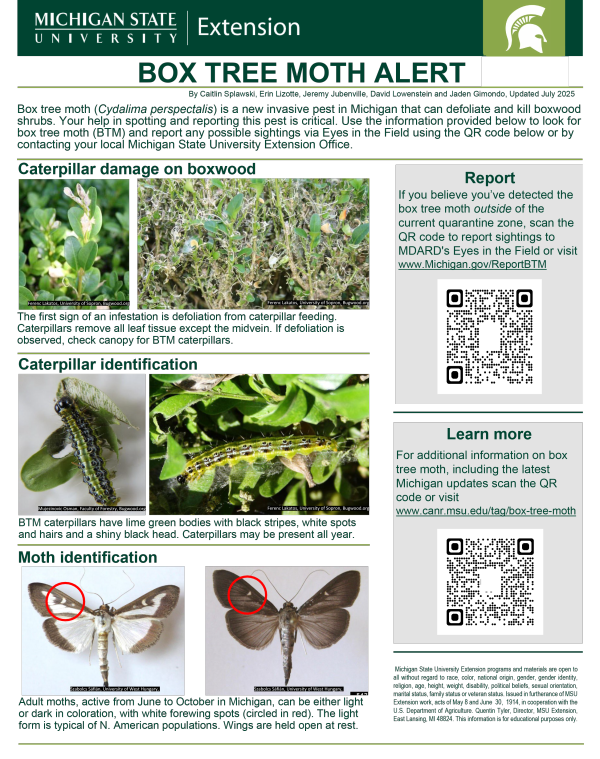
Box Tree Moth Alert
DOWNLOADJuly 31, 2025 - Caitlin Splawski, Erin Lizotte, Jeremy Jubenville, David Lowenstein and Jaden Gimondo, Michigan State University Extension
This Document is offered in: English, Espanol
Box tree moth (Cydalima perspectalis) is a new invasive pest in Michigan that can defoliate and kill boxwood shrubs. Your help in spotting and reporting this pest is critical. Use the information provided below to look for box tree moth (BTM) and report any possible sightings via Eyes in the Field using the QR code below or by contacting your local Michigan State University Extension Office.
Caterpillar damage on boxwood
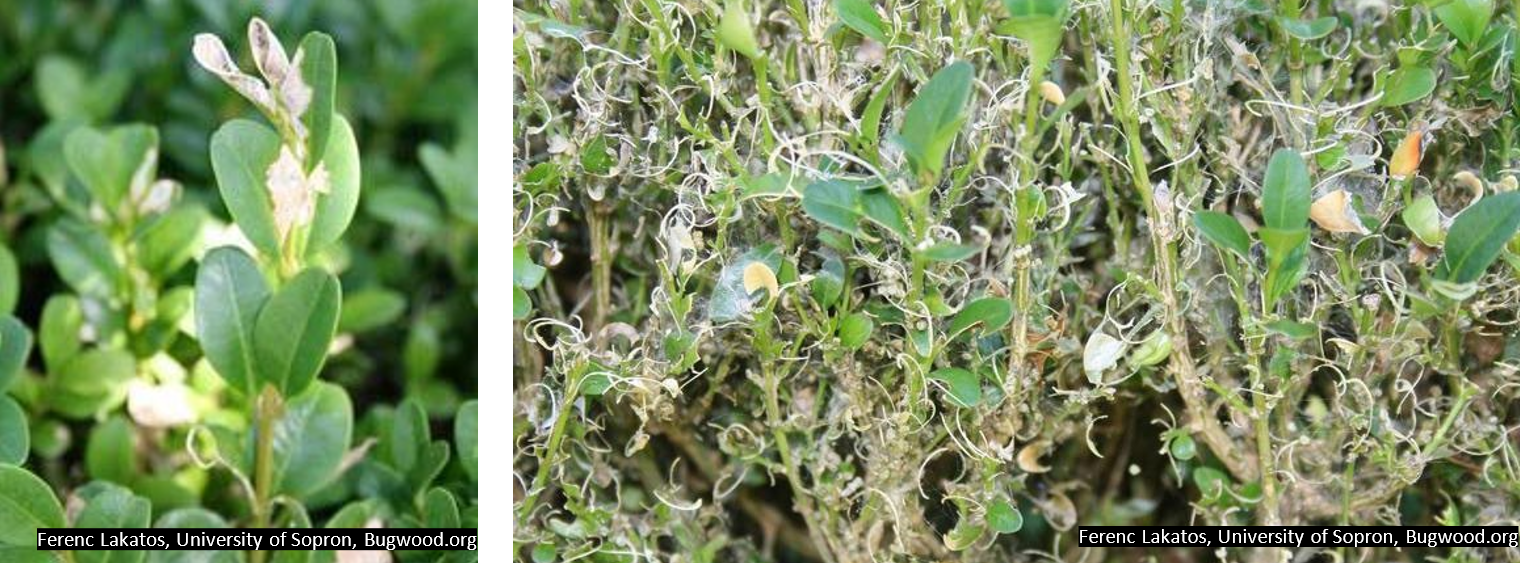
The first sign of an infestation is defoliation from caterpillar feeding. Caterpillars remove all leaf tissue except the midvein. If defoliation is observed, check canopy for BTM caterpillars.
Caterpillar identification
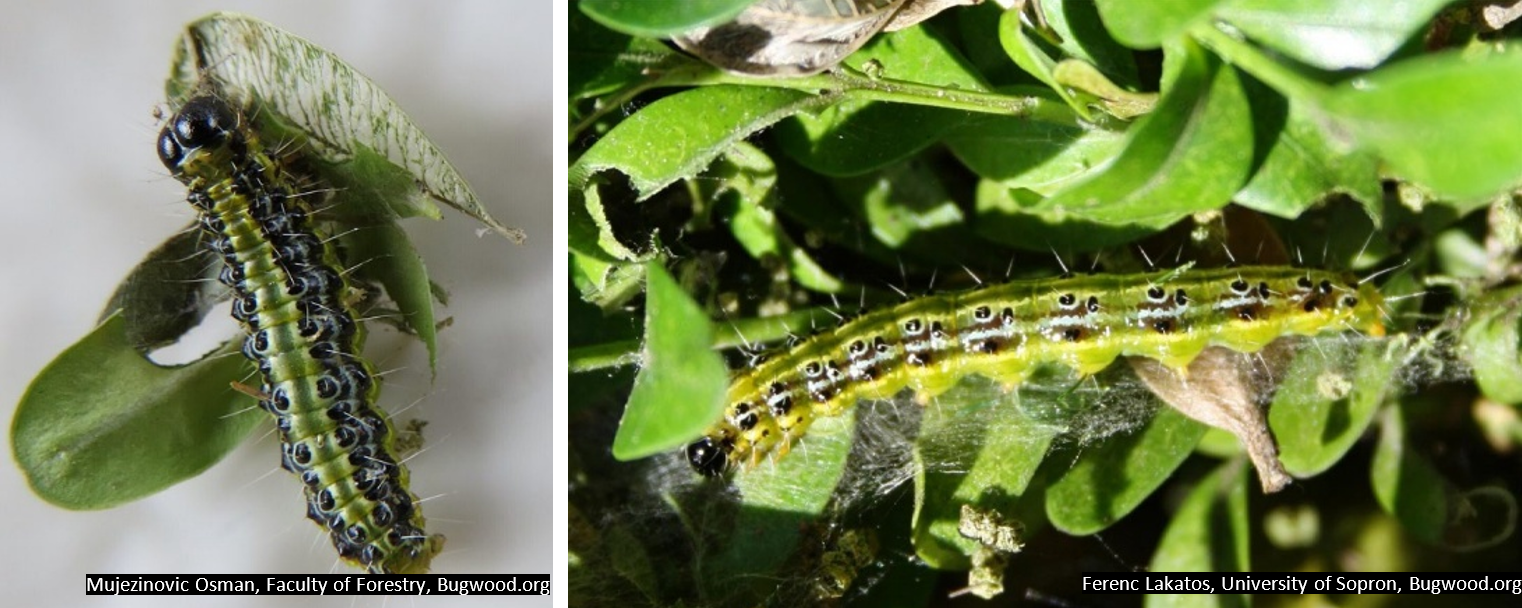
BTM caterpillars have lime green bodies with black stripes, white spots and hairs and a shiny black head. Caterpillars may be present all year.
Moth identification
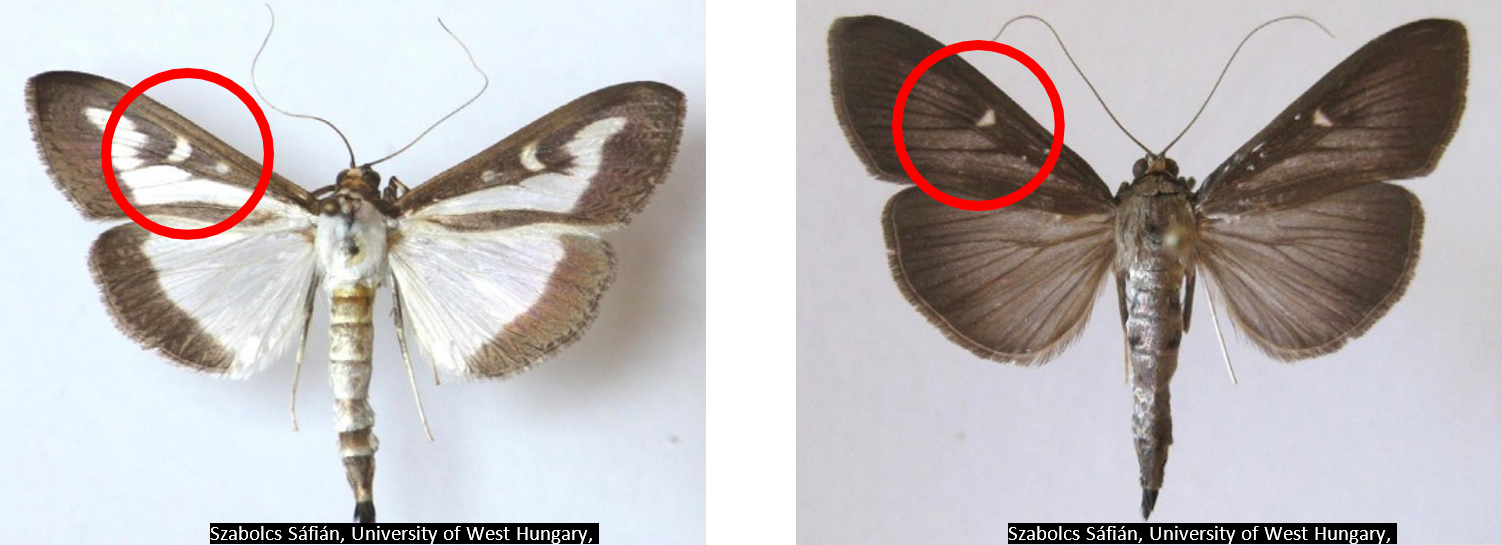
Adult moths, active from June to October in Michigan, can be either light or dark in coloration, with white forewing spots (circled in red). The light form is typical of N. American populations. Wings are held open at rest.
Report
If you believe you’ve detected the box tree moth outside of the current quarantine zone, scan the QR code to report sightings to MDARD's Eyes in the Field or visit www.Michigan.gov/ReportBTM
Learn more
For additional information on box tree moth, including the latest Michigan updates scan the QR code or visit www.canr.msu.edu/tag/box-tree-moth
What you can do about box tree moth
If you have found box tree moth in your landscape, there are options for control, steps you can take to prevent further spread, and landscape alternatives to consider when replacing damaged or dead shrubs. You can find more in-depth information on each of these topics at our MSU Extension box tree moth website or by contacting us through the Ask Extension service, https://www.canr.msu.edu/outreach/ask-an-expert
Michigan’s Quarantine
MDARD first implemented a quarantine on boxwood shrubs (Buxus spp.) in 2023. The quarantine helps prevent the spread of box tree moth by limiting the movement of boxwood shrubs. Within the regulated quarantine area, growers and retailers must comply with internal quarantine measures and movement of boxwood from inside the regulated area to outside the quarantine zone requires a signed compliance agreement. For homeowners and landscapers, moving any boxwood material is strictly prohibited, including live or dead shrubs and trimmings. No matter your location, it is encouraged that you monitor for infestations and dispose of plants properly, according to the regulations.
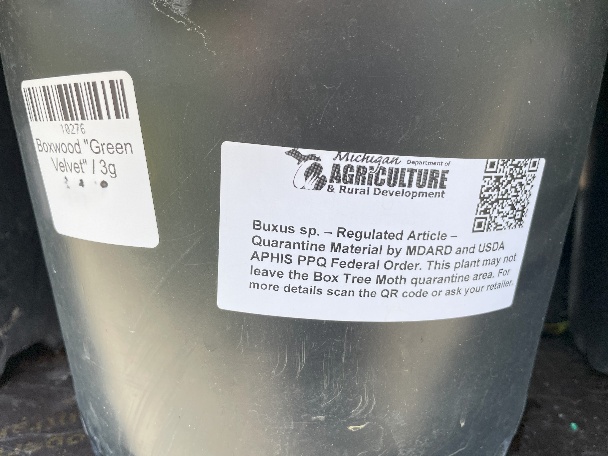
Options for Control
For small infestations:
- Hand-pick larvae from plants
- Apply Horticultural oil, Insecticidal soaps, Spinosad & Bacillus thuringiensis kurstaki (Btk) to control young larvae. Note: several applications may be needed throughout the season to target larvae of multiple, overlapping generations.
For heavy infestations:
- Avoid making preventative applications with broad-spectrum insecticides when BTM is not present.
- Insecticide effectiveness against eggs, pupae, and older caterpillars may be low since they tend to be on the undersides of leaves and hidden deep in a canopy of leaves and webbing.
- To prevent resistance issues, rotate pesticide mode of action.
- Select products that are least harmful to pollinators and other insects.
For proper disposal:
- Clean up leaf litter and debris to remove potential overwintering sites.
- Double-bag in plastic and place in municipal waste.
Landscape Alternatives
Few shrubs offer the compact size, evergreen foliage, and resistance to deer browsing that boxwood offers. However, with the amount of pest and disease pressure these shrubs are now facing, homeowners may opt for plants that will require less maintenance. Consider the following shrubs when replacing boxwoods:
- Japanese Holly (Ilex crenata)
- Inkberry Holly (Ilex glabra)
- Junipers (Juniperus spp.)
- Yew (Taxus spp.)
- Arborvitae (Thuja spp.)
These shrubs among others offer similar form and function in the garden. Be sure to consider your local climate, soil conditions, and deer pressure when finding a suitable boxwood replacement.
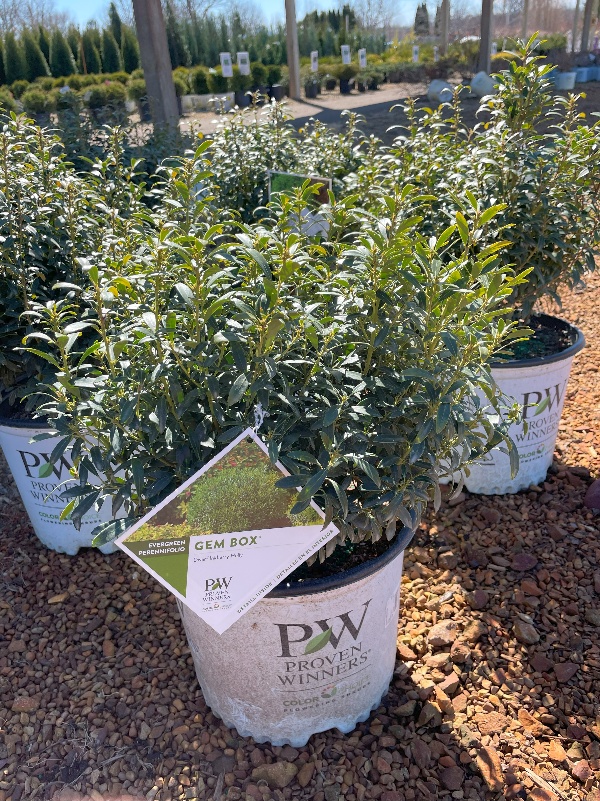
This work is supported by the Crop Protection and Pest Management Program [grant no 2024-70006-43569] from the USDA National Institute of Food and Agriculture. Any opinions, findings, conclusions, or recommendations expressed in this publication are those of the author(s) and do not necessarily reflect the view of the U.S. Department of Agriculture.



 Print
Print Email
Email








